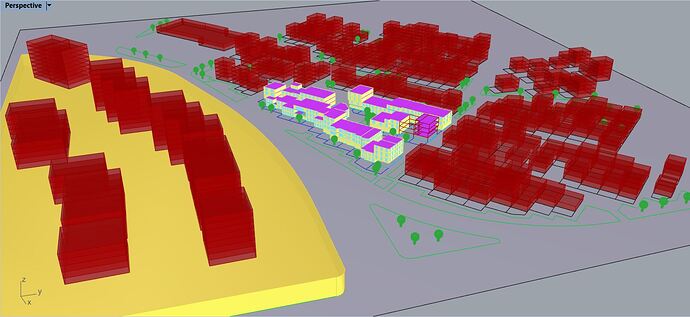hello
I want to investigate the impact of different urban block configuration on energy demand (heating, cooling and electricity) of building. for this I model 3 neighborhood with a diameter of 400m, now how can I consider the impact of the surrounding building (red block) with different height, material and age on energy consumption of building(yellow block)
This is kind of a tough question. Typically, the surrounding geometry is only accounted for in terms of shading impact, and thus it can be simplified to coarse bounding boxes and entered into the model as shading surfaces with no further information (i.e. material, age, HVAC etc).
If you want more a more detailed consideration from surroundings, you can incorporate the long-wave radiation, and the Urban Heat Island Effect (UHI):
- Modeling the surrounding buildings as energy models, and incorporating the ground allows you to incorporate the long-wave radiation impact of surrounding material into the energy performance of your anaylsis building. Impact of this on heating/cooling varies from 0.1 to 3.6%. This feature is available in EnergyPlus[1], although I’m not sure if it’s exposed in Honeybee or UrbanOpt (it likely is for the latter).
- You can simulate the UHI effect to modify the input weather file using the Urban Weather Generator component in Dragonfly.
More sophisticated and complicated ways of incorporating the surrounding buildings from there would include running a CFD to use wind pressure coefficients to inform convective heat transfer/natural ventilation, and the impact of district energy systems that allow you to efficiently use thermal loads between buildings. I don’t have a lot of experience for such workflows, so I’ll allow others to elaborate on it.
[1] Energies | Free Full-Text | Modeling Thermal Interactions between Buildings in an Urban Context
thanks for your help
